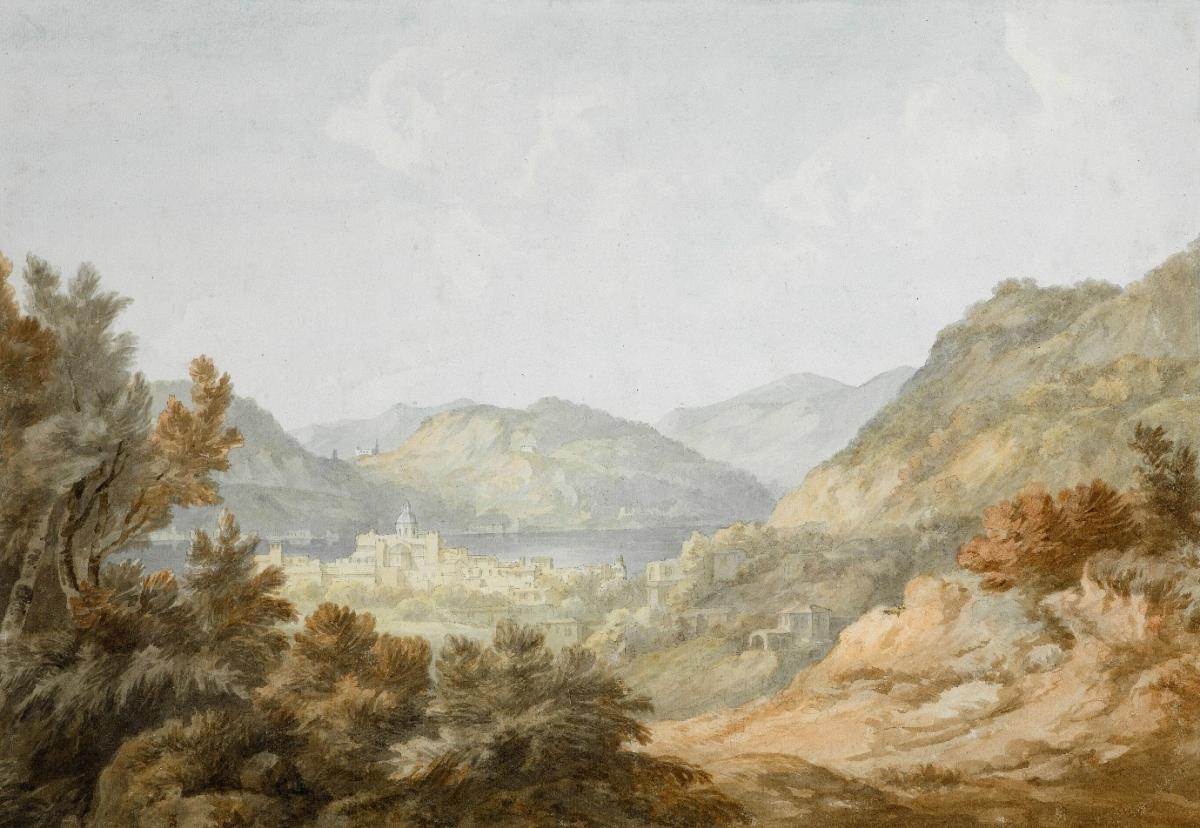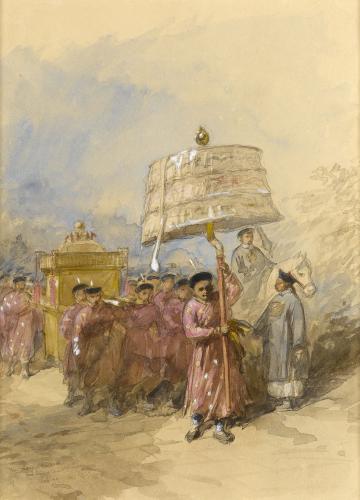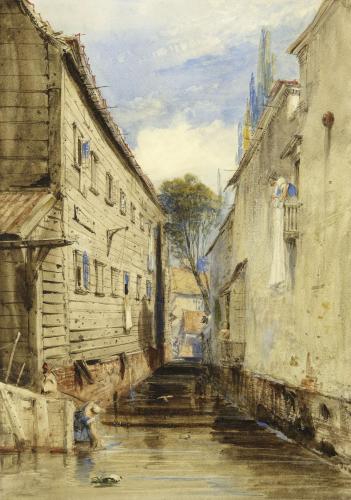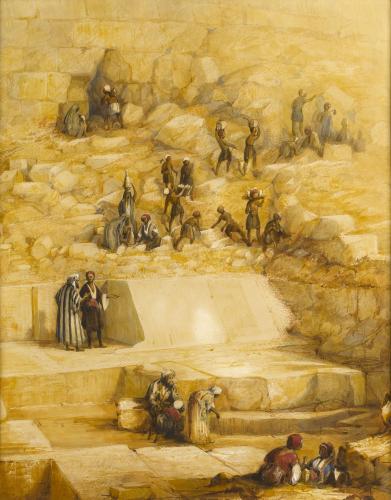

Price
£11000.00This object is eligible for a Certificate of BADA Provenance
The BADA Standard
- Since 1918, BADA has been the leading association for the antiques and fine art trade
- Members are elected for their knowledge, integrity and quality of stock
- Our clients are protected by BADA’s code of conduct
- Our dealers’ membership is reviewed and renewed annually
- Bada.org is a non-profit site: clients deal directly with members and they pay no hidden fees
John 'Warwick' Smith (1749-1831).
Lake Como, Italy.
signed with monogram lower left and inscribed verso: 'Como'.
pencil and watercolour and laid paper.
12 1/2 x 18 in. (31.1 x 45.4 cm.)
John ‘Warwick’ Smith (1749-1831) was born near Carlisle, the son of the Gilpin family’s gardener. This connection led him to study with Captain John Bernard Gilpin, whose sons William and Sawrey would also become important artistic figures in their own right. Smith’s talents secured him the patronage of connoisseur and collector George Greville, 2nd Earl of Warwick. A watercolour of 'Matlock' made such an impression on Greville that he funded Smith’s travels in Italy between the years 1776 and 1783. On his return he settled in Warwick and married in St Mary’s Church, the town with which his name will be forever associated.
In Italy he met other British artists, such as William Pars, Thomas Jones and Francis Towne. His relationship with Towne, with whom he travelled through Switzerland on his return to Britain, has always proven of great interest to art historians. Whereas Smith’s style imitated the smooth modulations of colour more akin to oil painting, Towne’s insistence on the pen and line proves one of the greatest divisions between both artists. It is wonderful to imagine how both artists must have compared their technique during their travels together. Certainly, surviving pictures from this period hint that they did allow themselves to be influenced by each other.
Recent research has uncovered a fascinating watercolour manual in Smith’s hand written for the Earl. Within this rare text we are now able to glimpse at his innovative style with new eyes. His insistence on the effects of softness, rather than the hardness of the previous generation of painters like Paul Sandby, attests to his original approach to the art-form. Equally, his ethereal colouring, which relied less on preparation in monochrome, and simple finishing came as Ibbetson wrote “so near [to] the tint of nature”.
Smith’s view of Lake Como (above) is a perfect example of his work. His sparing use of the pencil, combined soft colouring in nature and architecture, make us feel as if we are standing with the artist on an early autumn afternoon. Looking out over the lake and vegetation, captured with great fidelity to nature, it is easy to appreciate the effortless nobility he has imbued into the scene.
His effort in watercolours was appreciated widely during his lifetime. Most notably, he served at various times both as President and Treasurer of the Old Watercolour Society before his resignation in 1823.
Despite being outstripped by the next talented generation of painters, his contribution to the development of the art-form was and should still be recognised. Writing in 1840 George Barret exclaimed that “[Smith’s] style, which I trust is still progressively improving, has been, with some exceptions, adopted, and may now very justly claim to the title of painting”.
The BADA Standard
- Since 1918, BADA has been the leading association for the antiques and fine art trade
- Members are elected for their knowledge, integrity and quality of stock
- Our clients are protected by BADA’s code of conduct
- Our dealers’ membership is reviewed and renewed annually
- Bada.org is a non-profit site: clients deal directly with members and they pay no hidden fees




